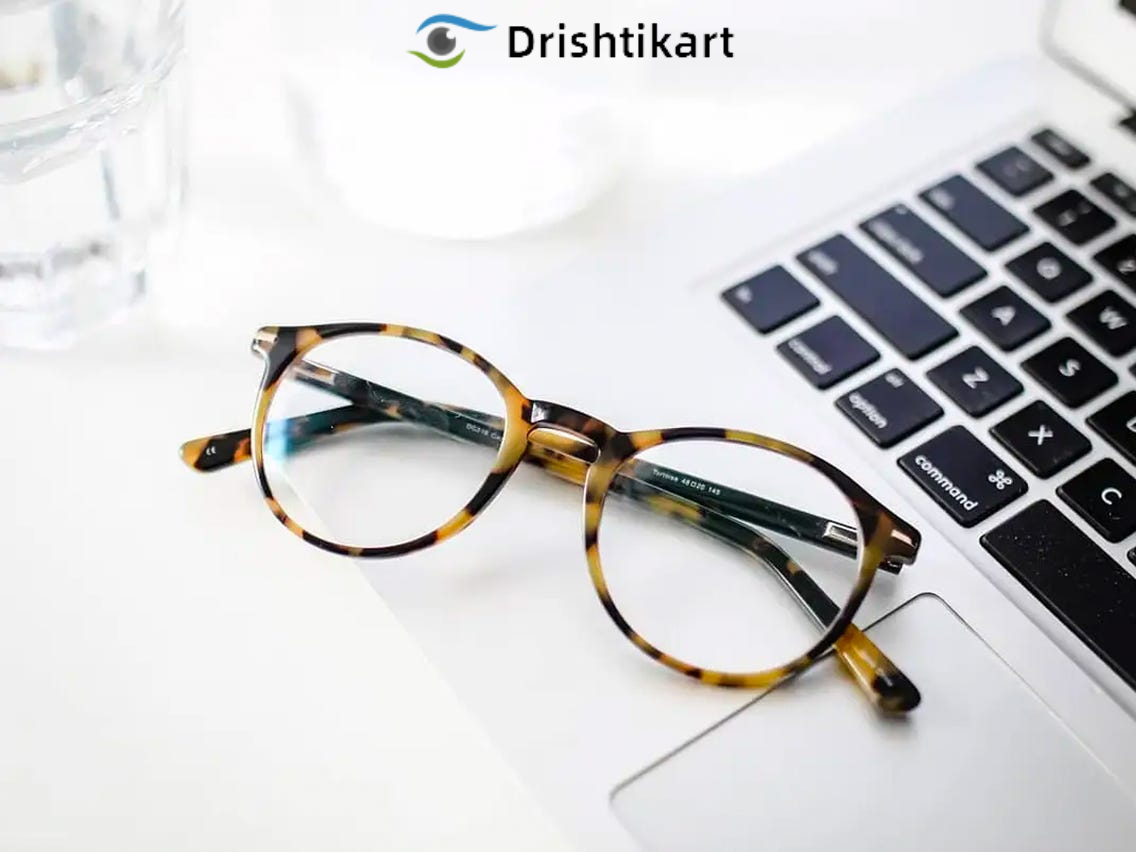 5 Oct 2021 | Marketing | Author: Drishtikart India | 1842 views
5 Oct 2021 | Marketing | Author: Drishtikart India | 1842 views
What Do Computer Glasses Do?
Do your eyes feel irritated and dry after a long workday in front of the computer? Check out the functions and benefits that computer glasses offer you and your eyes.
If you take a look around your workplace you will most likely see a computer or even tablet at every desk. In today’s technological world, our lives have become dependent on the use of computers, tablets, and smartphones.
Case in point, you’re reading this post on a digital screen right now.
For those of us who consistently operate these devices, we tend to notice that our eyes become strained and irritated throughout the workday. Computer vision syndrome results from the high visual demands of computer work. This temporary vision condition is caused by staring at a computer screen for long periods of time without the proper eye protection.
Common symptoms of computer vision syndrome include blurred vision, redness in the eyes, back or neck strain, dry eyes, double vision, and dizziness.
The best way to protect your eyes, and eliminate the eye strain associated with extended computer use, may be computer glasses.
What Are Computer Glasses?
Many of us wear glasses to correct some kind of vision problem. But not all glasses are right for all situations.
Computer glasses differ from regular glasses in that they are specifically made to help reduce the eye strain associated with computer work.
The average person works approximately eight hours a day in front of a computer. These long hours make us more prone to vision-related problems. And sadly, we’ve become accustomed to the fact that our eyes just feel tired and irritated at the end of the workday.
The anti-reflective coating on computer glasses helps reduce the glare that bounces off the screen and light coming from the device. Glass color tinting is also a function that helps increase the screen’s contrast without making it too harsh for your eyes.
Types of Lenses
Most computers are distanced at 20 to 26 inches from the user’s eyes, and this is considered to be the intermediate zone. However, just like in regular glasses, not everyone’s eyes are the same in each zone.
There are several different lenses that are offered with computer glasses:
- Single vision computer glasses reduce the risk of blurred vision, eye strain, and bad posture. Single vision lenses are for any age computer user.
- Occupational progressive lenses are a multifocal lens that corrects near, intermediate, and distance vision. These lenses give you a larger more comfortable vision at the computer, but it is not recommended for longer distance tasks.
- Occupational bifocal and trifocal lenses offer a higher zone for intermediate and near vision rather than regular bifocal and trifocal lenses. The position of the intermediate and near vision zones can be customized to your specific computer needs.
Benefits of Wearing Computer Glasses
No one enjoys eyestrain, blurred vision, or constant computer-related headaches. Glare reduction, an increase in contrast, and being able to look at the screen for longer periods of time are benefits that come with computer glasses.
In the workplace, we sometimes feel it’s necessary to peer over our glasses or hunch closer to the computer to be able to read the screen better. But we all know this isn’t helping. Computer glasses promote clearer vision, which reduces the need to strain your back and neck.






